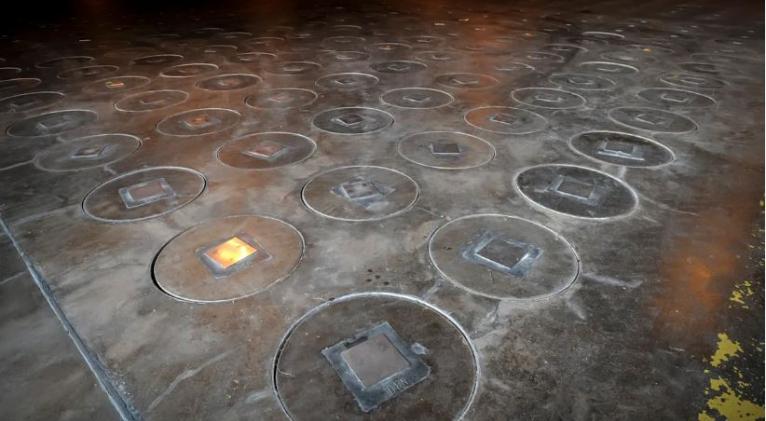
USA, July 31 – Workers at a site in South Carolina where components for U.S. nuclear bombs were once manufactured have found a radioactive wasp nest, but authorities said there is no danger to anyone.
Employees routinely checking radiation levels at the Savannah River Site near Aiken found a wasp nest on a pole near tanks where liquid nuclear waste is stored on July 3, according to a report from the Department of Federal Energy.
The nest had a radiation level 10 times what federal regulations allow, officials said.
Workers sprayed the nest with insecticide, removed it, and treated it as radioactive waste. No wasps were found, officials said.
The report says there are no leaks from the waste tanks, and that the nest likely became radioactive because of what it called "site-inherited radioactive contamination" by residual radioactivity left when the site was fully operational.
The activist group Savannah River Site Watch said that the report was, at best, incomplete as it does not detail where the contamination came from, how the wasps could have found it and the possibility of another radioactive nest if there is a leak somewhere.
Knowing the type of wasp nest could also be important: some wasps make soil nests, and others use different materials, which could indicate where the contamination came from, wrote Tom Clements, the group's executive director, in a text message.
"I'm as mad as a wasp that SRS didn't explain where the radioactive waste came from or if there is some kind of leak from the waste tanks that the public should be aware of," Clements said.
The tanks are well within the site's boundaries, and the wasps typically fly only a few hundred meters (yards) from their nests, so there is no danger of them being outside the facility, according to a statement from Savannah River Mission Completion, which now oversees the site.
If the wasps had been found, they would have had significantly lower radiation levels than their nests, according to the statement provided to the Aiken Standard.
The site was opened in the early 1950s to manufacture the plutonium cores needed to make nuclear bomb cores during the early Cold War. The site has now been repurposed for nuclear plant fuel manufacturing and cleanup.
The site generated more than 625 million liters (165 million gallons) of liquid nuclear waste, which, through evaporation, has been reduced to about 129 million liters (34 million gallons), according to Savannah River Mission Completion.
Forty-three of the underground tanks are still in use, while eight have been closed. (Text and Photo: Cubasí)